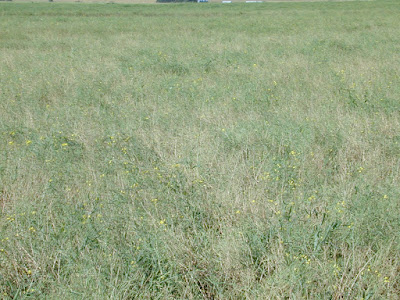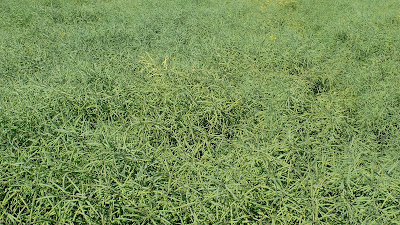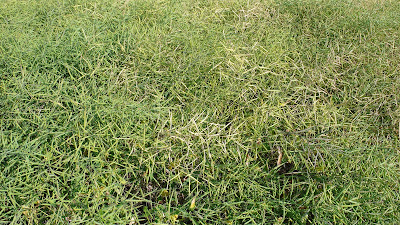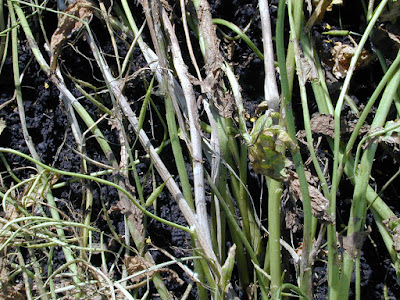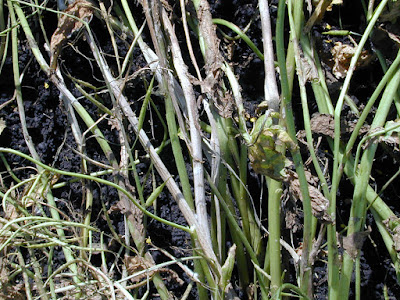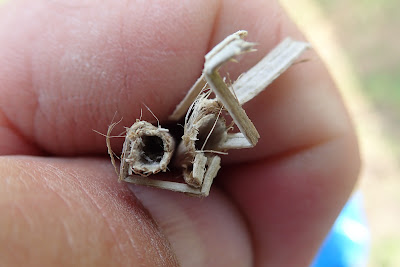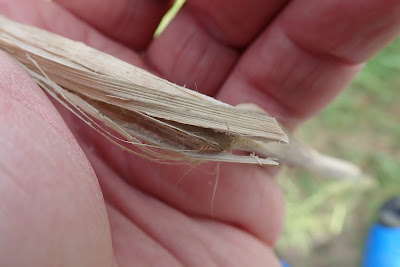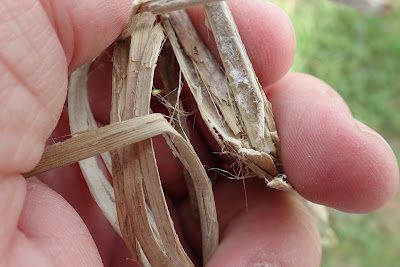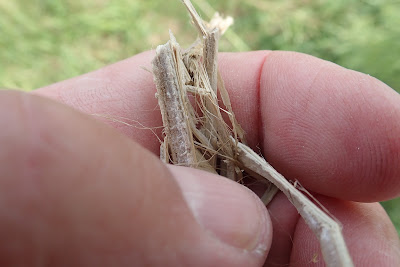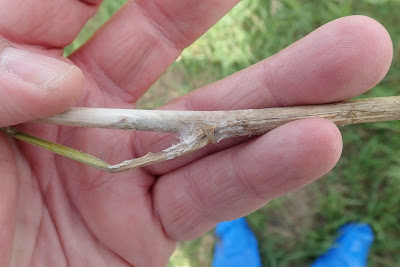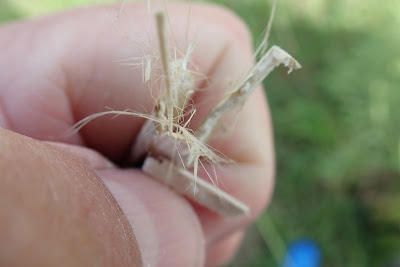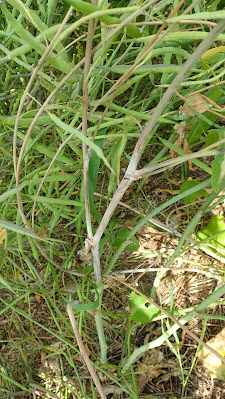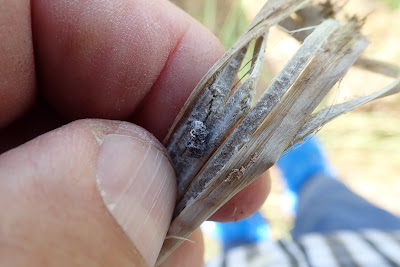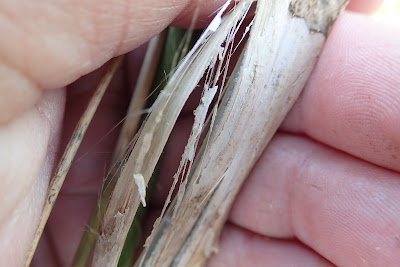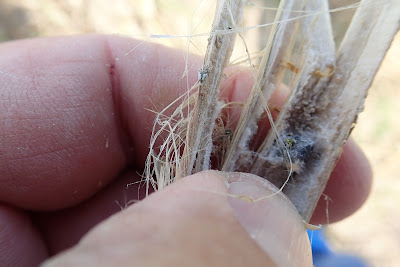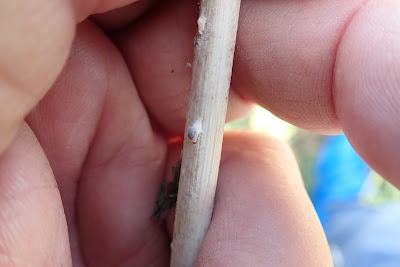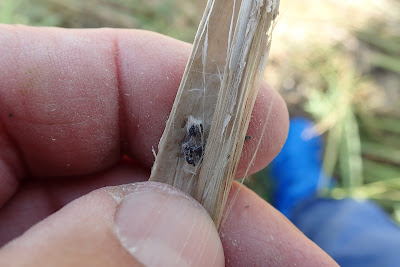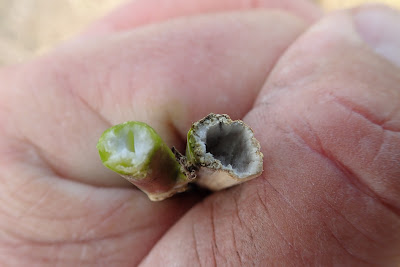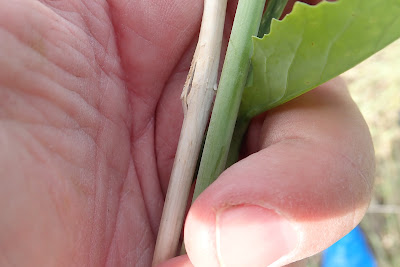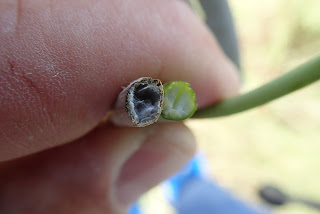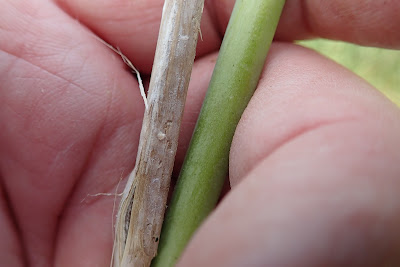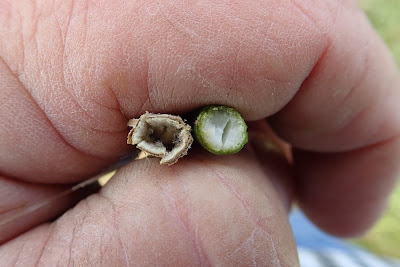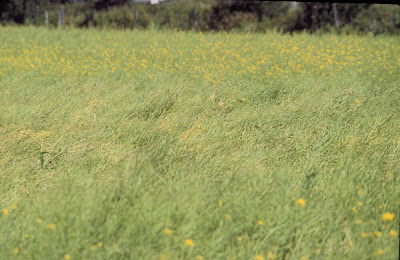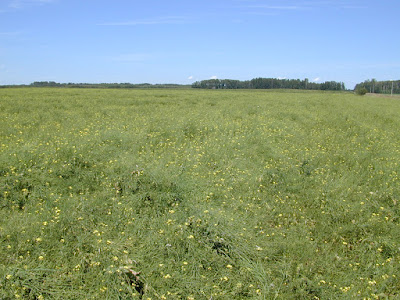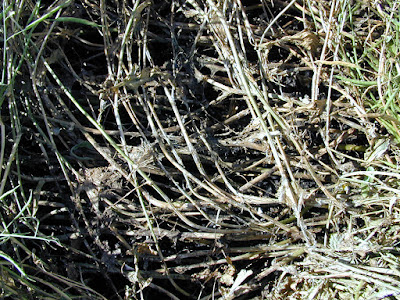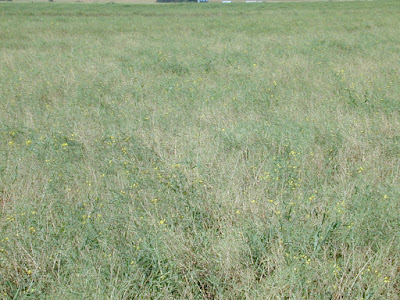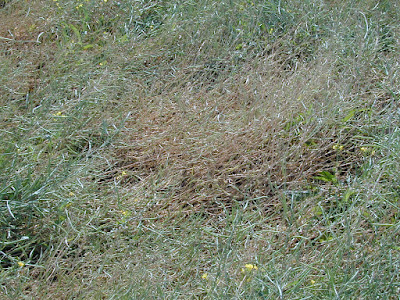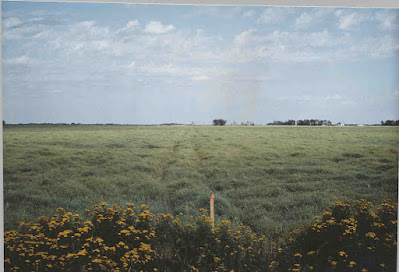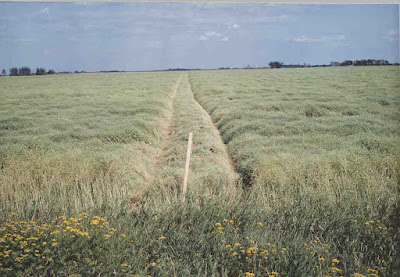We are fast approaching the time when you can rate
sclerotinia stem rot in your canola. Ideally, plants should be rated within a
week or so before the crop would normally be swathed (if it was being swathed
of course). Once the crop starts to turn, rating becomes very difficult.
Key characteristics of sclerotinia infections in canola include:
- Infected tissue has a characteristic bleached white/whitish/tan gray appearance
- Affected tissue when it dries is very brittle and shreds and shatters easily when you twist the stems
- The pith portion of affected stems is typically not present
- In heavily infected stems the pith tissue is destroyed leaving only the outer ring of stem tissue
- Sclerotia (black resting bodies) or sclerotial initials (clumps of compacted white hyphae that turn black when mature) are typically produced in or on affected plant tissues
- External sclerotia typically develop when you have wet conditions following infection and as the crop progresses towards senescence.
- Infected tissue doesn’t have a bleached white/whitish grey or tan appearance
- Affected tissue is not brittle and doesn’t shred and shatter when you twist the stems between your hands
- The pith portion of stems is still intact
- Sclerotia or sclerotial initials (dense clumps of white hyphae) are not produced in/on suspect symptoms
- Yellowing of stems/branches may be due to other factors, such as root disease, nutrient, or weather stress, etc.
An alternative rating scale is one from Kutcher and Wolf
(2006). Although a bit more complicated,
it covers infections on various parts of the plant. Note symptoms in the upper canopy (pods,
etc.) generally have less impact on yield.
Rules of thumb have been developed to assess the potential
loss associated with stem rot infections.
In general the % yield loss is approximately 0.5 times the % of infected
plants (main stem or main branch infections). Thus, if you note 30% infected plants, the potential yield loss is approximately 15%.
The PCDMN has also produced overviews for assessment of stem rot levels and identification of disease symptoms accessible with the following hyperlinks:
• An assessment protocol for sclerotinia stem rot in canola
• A slide deck overview of a guide to scouting and identification of sclerotinia stem rot in canola
• Playing cards describing sclerotinia stem rot of canola symptoms


